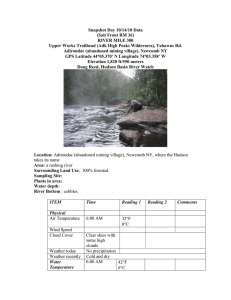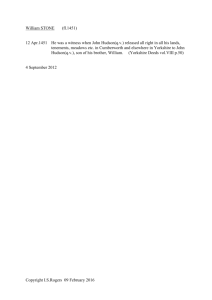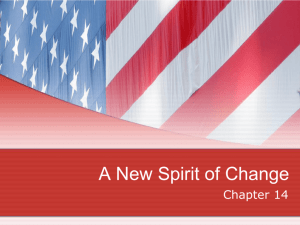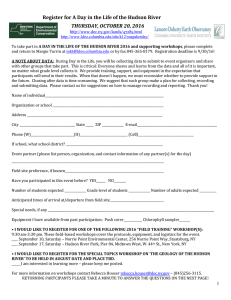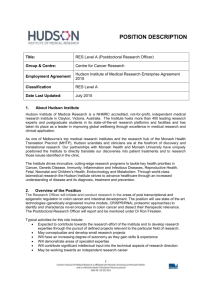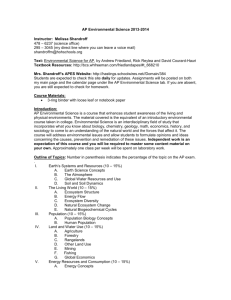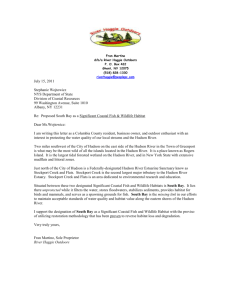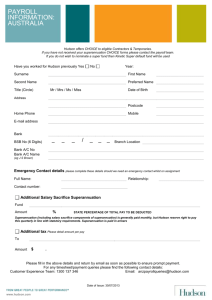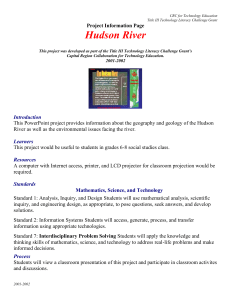Art Lesson--Analyzing Artwork of the Hudson River School
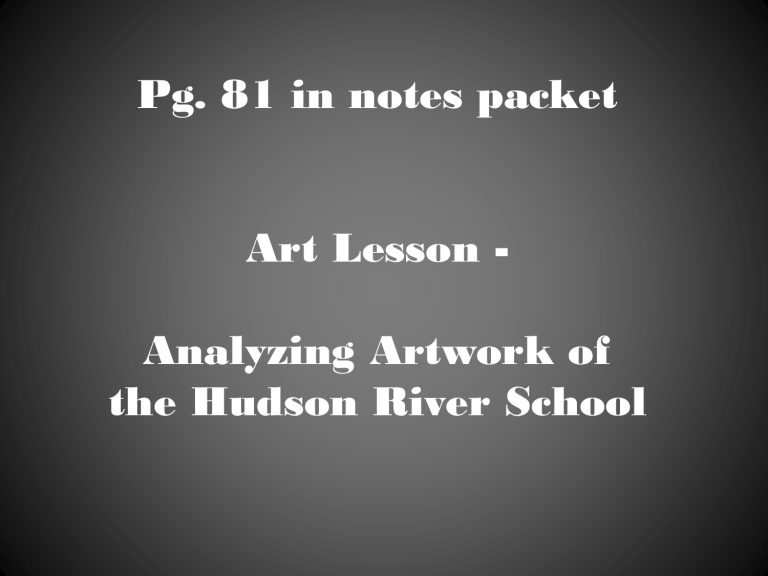
Pg. 81 in notes packet
Art Lesson -
Analyzing Artwork of the Hudson River School
The Hudson River School refers to a group of artists led by Thomas Cole, an immigrant from England.
Inspired by the natural beauty of New York’s Hudson River
Valley and the Adirondack and
Catskills Mountains, the artists of the Hudson River School achieved fame by painting romantic landscapes.
Rather than using nature as a mere backdrop for history paintings or portraits, nature took center stage in their canvasses. Their scenes show the power and beauty of America’s wilderness. Human figures were almost dwarfed into insignificance by the majesty and grand proportions of nature.
Battle of Bunker Hill
John Trumbull
1786
Landscape with Figures A
Scene from The Last of the Mohicans
Thomas Cole
1826
Traditional painting where people are the focus vs.
Hudson River School painting where nature is the focus
Instructions
Fill out the chart as you view the following slides. For each picture, record in the appropriate column the title of the work, the last name of the artist, and the year it was painted. In the 4 th column, record what object stands out to you as the prominent landscape feature. In the 5 th column, tell what the humans are doing in the painting. (Hint: All but one of the paintings have some human activity.)
The Oxbow
Thomas Cole
1836
Kindred
Spirits
Asher
Durand
1849
Niagara
Frederick Edwin Church
1857
The Oregon Trail
Albert Bierstadt
1867
Cliffs of the Upper Colorado River
Thomas Moran
1882
Movement west into the Louisiana territory and beyond increased during the 1840s.
American headed west in search of land and economic opportunity. Do you think the paintings of the Hudson River School might have had an effect on Americans’ desire to move west? Why or why not? Answer this question at the bottom of pg. 81.
Keep this chart in your notes and then complete the reading assignment about
Samuel F. B. Morse.

